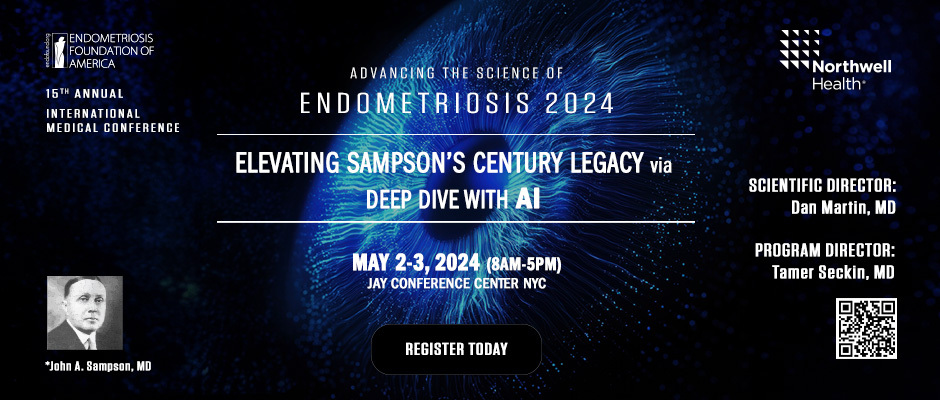
EndoFound’s 15th Annual International Medical Conference will be in New York City this Thursday and Friday, May 2 and 3. Nearly three dozen speakers will discuss all aspects of endometriosis around the theme “Elevating Sampson’s Century Legacy Via Deep Dive with AI.” Dr. John Sampson (1873-1946) was a gynecologist and pioneer in endometriosis research in Albany, New York.
This special 23-minute episode of EndoTV is hosted by Diana Falzone, the executive producer of the show, and Dr. Dan Martin, EndoFound’s scientific and medical director. The guests are Dr. Tamer Seckin, founder of the Seckin Endometriosis Center in Manhattan and co-founder of EndoFound, and Dr. Serdar Bulun, chair and professor of Obstetrics and Gynecology at Northwestern University.
Martin, Seckin, and Bulun will speak at the conference. Leading into it, Seckin and Bulun use this episode to give viewers a taste of Sampson’s work in endometriosis and its relevance today.
“Sampson was a genius. The guy lived almost a hundred years ago and really defined every element we are still trying to emphasize,” Seckin says. “He said menstrual tissue outside the uterus, but he also said inflammation. He was a pathologist and saw these under a microscope.”
Martin notes that Sampson concluded that the intelligent treatment of patients with peritoneal endometriosis is more important than theory.
“What an insightful person,” Bulun says. “He said this like a hundred years ago, right? He’s not saying, ‘Let’s take these out and cure the patient.’ He said, ‘Let’s think about it. How can we approach this patient?’ Because he understood that repeated episodes of menses was the cause of endometriosis.”
Both doctors also use this episode to share what they want everyone to know about endometriosis. It’s a general overview of what conference attendees will hear in depth on Thursday and Friday.
“Endometriosis is one disease. It’s not a condition but one disease,” Seckin says. “And there’s one treatment for removing the disease. Whether it is very small or very big, whether it is a cyst or deep, [the treatment] is excision—removing the disease completely and restoring the anatomy.”









